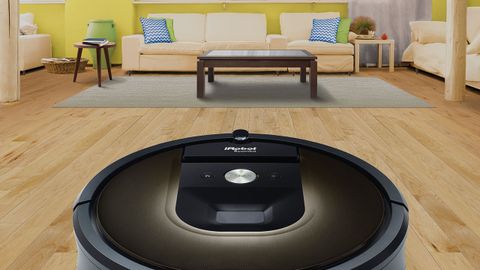
Though most automated vacuum cleaners are happy to bounce around your rooms, bumping into furniture like a drunk sleepwalker, IROBOT ROOMBA 980 is leading the pack in terms of vacuum intelligence.
Armed with a number of iAdapt 2.0 navigation sensors and iRobot’s proprietary visual simultaneous localisation and mapping technology (or vSLAM for short), the Roomba 980 impressed greatly when it was released in the US and UK late last year. Now, iRobot’s most advanced vacuum cleaner to date has finally arrived on Australian shores.
As packed as it is with high tech features, including newly-added iOS and Android app control and Wi-Fi connectivity, the Roomba 980’s increased functionality over previous models does bring with it a hefty price tag – one that may realistically make the unit inaccessible for many users.
That said, we’re convinced that the iRobot Roomba 980 offers enough robotic wizardry and technological advancements to make it a viable purchase for those who can afford it, or an utterly magnificent gift that’ll likely make you the favourite son or daughter in your family.
The set up
Right out of the box, it’s possible to have the Roomba 980 up and running in a matter of minutes. Once you’ve plugged your Home Base docking station’s power cord into a wall socket, all you have to do is remove the battery pull tab and yellow bin insert from the Roomba’s undercarriage, press the clearly marked ‘Clean’ button in top of the unit, and your automated vacuum will start cleaning your home immediately.
Press the unit’s ‘Home’ button, and the Roomba 980 will stop everything and, in one of its most impressive acts of futuristic awesomeness, automatically guide itself over to its charging station like it’s following a homing beacon. It’ll also do this when it’s running low on battery or if its bin is full.


